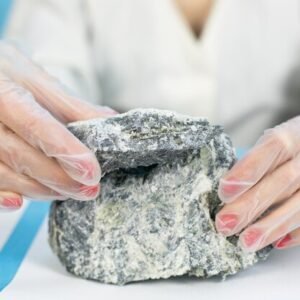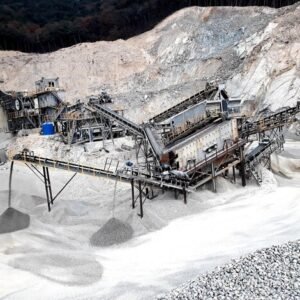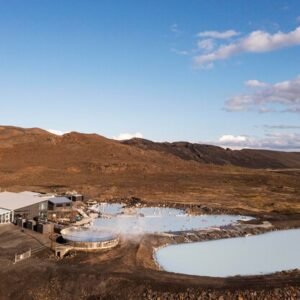The Complete Guide to Iron Ore Pellets and Their Production
Steel and cylindrical objects composed of smaller pieces of iron ore are used to make iron ore pellets. They are made by the process of removing iron ore fragments and are the consequence of the mining. It has a high iron content. However, the size is not sufficient to be used directly for the production of steel. The method of converting the particles into pellets is known as pelletizing. It is an effective process used in blast furnaces, as well as processes that demand immediate reduction in order to create the product.
The procedure of creating iron ore pellets is the most important step in the production of iron. It offers a range of advantages over other options, like raw powders of iron ore. The production of steel is much more effective using pellets since they’re more consistent in dimensions, size, and proportions. Additionally, they allow greater entry into the blast furnace.
This leads to a better reduction in process, as well as the creation of high-quality steel. This blog will explore the main reasons why iron ore pellets are essential to making steel and how they’re made, as well as the many kinds of bentonite employed to create pellets.
Also Check:- Bentonite manufactures in India
Importance of Iron Ore Pellets in the Steel Production Industry
Iron ore pellets are used in every step of creating steel. The principal ingredient used to make steel is iron ore. This material must undergo transformation to a form that’s suitable for use directly or in blast furnaces.
They offer a variety of advantages over different kinds of iron ore, like lumps and sinter ore. They generally consist of between 66% and 35% iron, which is as high as 50% of the lumps or sinters. This means that there is less reuse of discarded materials. It also increases efficiency and reduces the use of energy when producing iron and steel.
Additionally, pellets have greater stability in terms of size and composition, ensuring that the operations in blast furnaces remain consistent. This helps to eliminate the risk of fluctuations in the manufacturing process and also improves steel’s performance simultaneously. In addition, because pellets produce less dust, they’re also easy to transport or handle, thus lessening environmental pollution and the waste of resources.
The Iron Ore Pellet Plant Process
The search for iron ore can be the initial process to create the iron pellets. This involves crushing and pulverizing the substance into smaller pieces. The result is an iron-based product, which is referred to by the name of “iron ore fines,” composed of various components, such as bentonite, limestone, or other chemical agent, to enhance their ability to bond in addition to altering the chemistry of the end product.
Then, the mix undergoes treatment in the facility for pelletizing, which produces tiny spherical pellets that typically vary between 8-16mm in diameter. This process occurs with an agglomerating disc drum, which helps to mix fine particles that make these pellets.
Once they have been made, the pellets go through a preheating and drying procedure designed to get rid of the moisture and prepare them for the following process, which is called induration. Induration involves heating the pellets in an oven until they reach temperatures between 1,250 to 1,350 degrees Celsius.
In this phase, the pellets go through modifications in their physical and chemical properties, making the pellets strong enough to endure the stress of transportation or use within blast furnaces as well as direct reduction reactors.
Following the process of induration, the pellets are subjected to screening and cooling to guarantee the same dimensions and high quality. The final product is to be suitable for the steel industry. There, it serves as a key input in the production of premium-grade steels.
Types of Bentonite Used in Iron Ore Pellet Plants
Calcium and Bentonite sodium are two major types of bentonites that are used in pellet plants. Both have specific properties that allow them to be used in different circumstances of pelletization.
Sodium Bentonite
The mineral sodium bentonite is a remarkable material due to its exceptional absorbency and remarkable ability to expand within water. As a result, it produces iron ore pellets with excellent mechanical characteristics. It is a fantastic binder. When it comes to producing high-strength pellets that are used in blast furnaces, sodium bentonite is utilized mainly in the pelletizing process.
Calcium Bentonite
In addition, calcium bentonite is less expandable than sodium bentonite; however, it can be a binder, making it more stable and more resistant to changes. For pelletizing procedures where the pellet’s quality must be maintained, the form of bentonite is a viable option. In addition, when it comes to direct reduction processes that require less silica within pellets, calcium bentonite can be used in a variety of ways.
Iron Ore Fines vs. Pellets: A Comparison
Fines from iron ore, as well as pellets, are utilized in the making of steel. However, there are certain distinctions that impact their usage in a variety of processes.
Iron Ore Fines
Iron ore fines are small chunks of iron that can’t be used directly for the making of steel. They must transform into larger, more homogeneous forms in order to work efficiently in blast furnaces and other methods of direct reduction. The cost and accessibility of iron ore are acceptable. However, further processes like pelletizing and sintering should be applied to these particles to enable the use of these materials to manufacture steel.
Iron Ore Pellets
On the other hand, iron ore pellets are already made of a mix and can be utilized in the making of steel. The reason pellets are thought to be suitable for efficient furnaces is because of their consistent size and design, which is what makes them superior to smaller particles when it comes to iron amounts. Furthermore, pellets don’t produce as much dust and are simpler to handle, thus lessening the losses of materials in handling and transportation.
The decision to utilize the finer or larger forms of iron ore pellets is contingent on the filters utilized during the production of steel, the raw materials that can be found in the region, and the standard of production likely to be obtained from the final product. These days, pellets are the most widely used method of making steel since they’re much more effective compared to other techniques and create more high-quality products.
Chemical Reactions Involved in Iron Ore Pellet Production
In addition to the instructions I’ve seen, iron ore pellets are created by several chemical reactions that make them durable, tough, and suitable for making steel. Numerous important chemical changes happen during this time due to the extreme temperatures utilized for treating the pellets through the process of induction.
- Dehydration is the first stage of compaction to eliminate the pelts of water. It is done by drying and heating, which eliminates bentonite and other ingredients, not only apparent wetness but also the molecules that are chemically bound with it.
- Oxidation. As temperatures rise, iron oxides contained in pellets are exposed to the process of oxidation. Because of this, it’s essential for pellets to be strong since they are based on joining iron particles in a stable and even shape.
- Sintering is a process that produces a robust and dense pellet that is partially melted, thereby binding iron particles within these pellets. The process occurs between one two hundred fifty degrees Celsius between one and three hundred Celsius. Actually, it is the most important stage of indulgence.
Iron Ore Pellet Manufacturers
The iron ore pellet market is huge, with a variety of big companies that manufacture top-quality pellets for steel production. One of the largest manufacturers of pellets made of iron ore is:
- Vale S.A.: It’s a massive Brazilian firm that is able to extract minerals from the earth and is the largest producer of iron-based pellets around the globe. Vale2H owns several pelletizing facilities in Brazil and Oman that produce millions of tonnes of pellets manufactured annually.
- LKAB is a Swedish mining company and is one of the leading producers of premium iron ore pellets in Europe. LKAB pellets stand apart due to their minimal phosphorus content, in addition to their high amount of iron. This is a perfect ingredient for the production of steel.
- Cliffs Natural Resources is among the most important North American producers; Cliffs operates a pelletizing plant throughout the United States and Canada to help the steel industry in the United States by providing its steel components.
- ArcelorMittal, in this particular context, is vital to be aware that it is the biggest producer of steel in the world and operates its iron ore within its mines as pelletizing and processing facilities across several nations. They also create iron-enriched globes for use on the world market.
Conclusion
Steel production is heavily dependent on iron ore pellets as they have numerous benefits compared to different types that contain iron. Making iron ore pellets involves taking small pieces of mineral and transforming these spheres into huge solid and tough globes, which will eventually enhance the properties of the metal. Bentonite selection is a chemical reaction in and of its own, and an examination of ore’s fines and pellets is vital to finding the highly efficient and quality final product.







